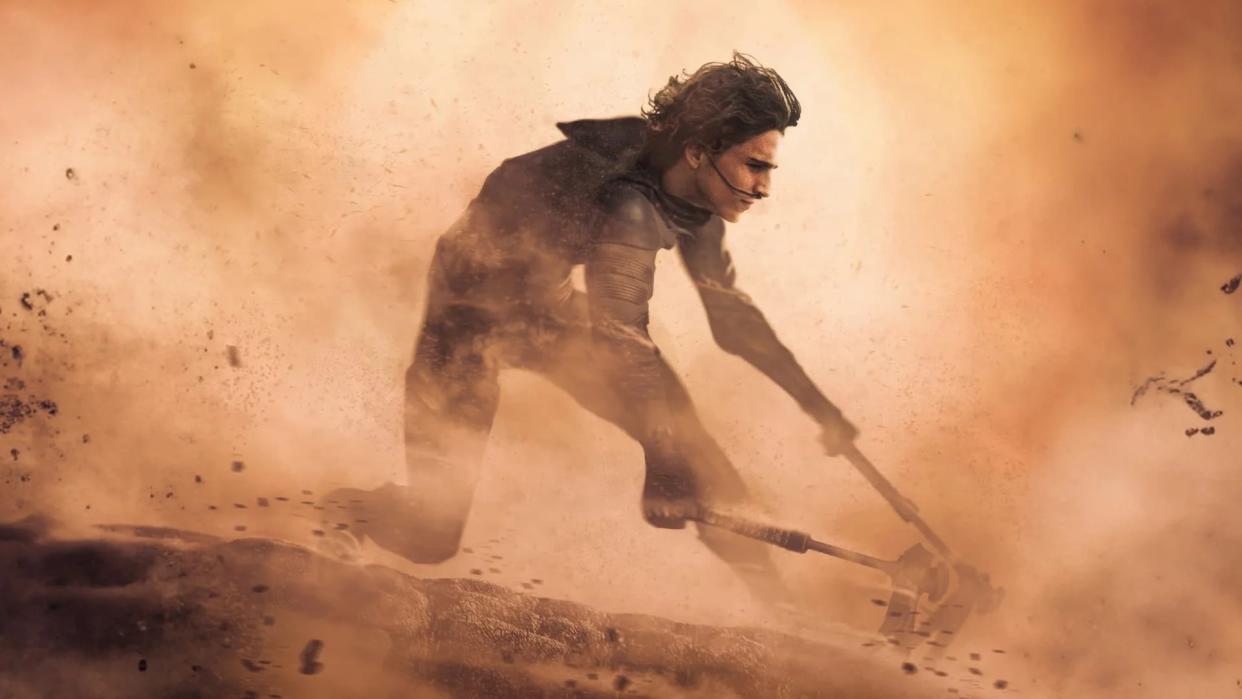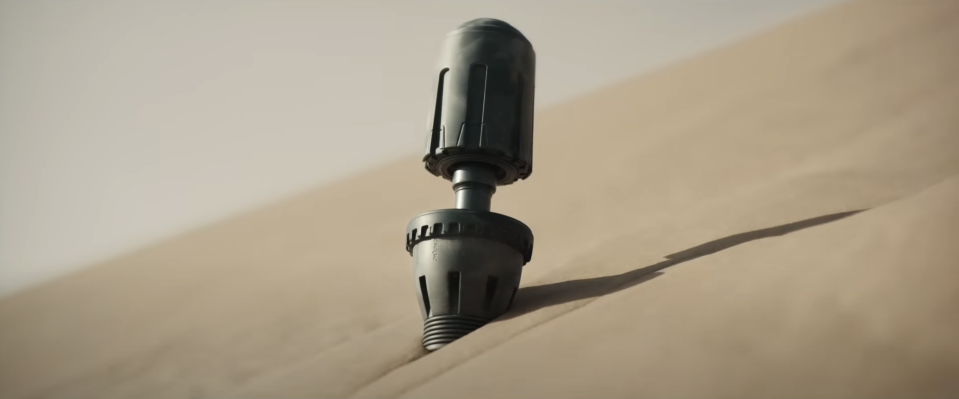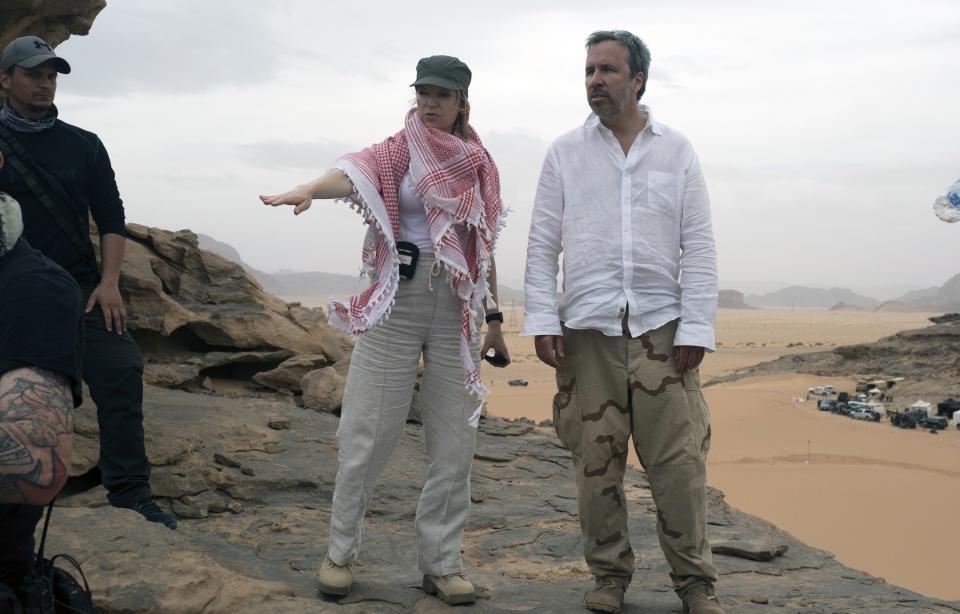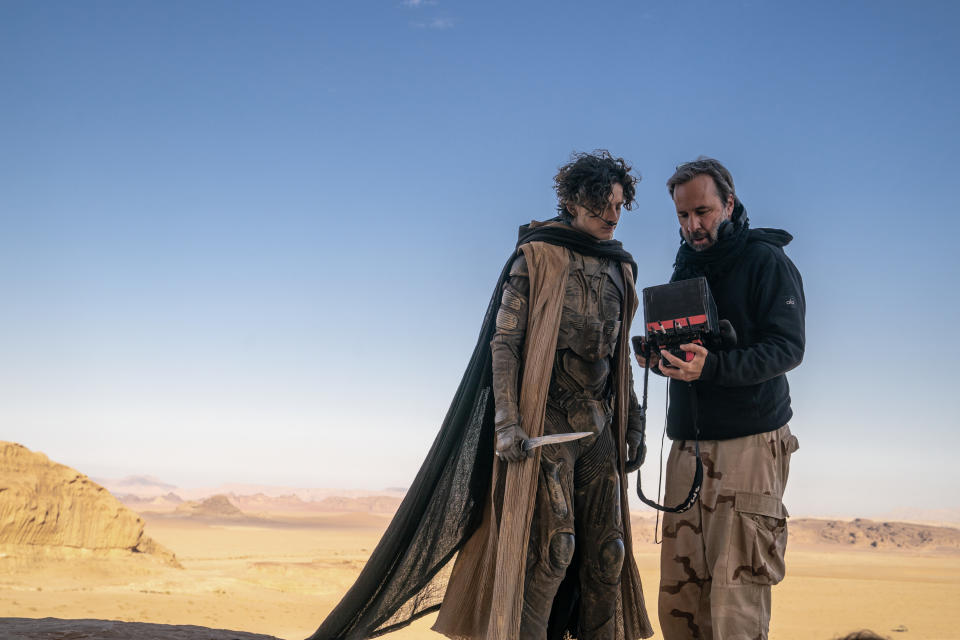‘Dune: Part Two’: How to Ride a Sandworm

The next chapter in the mythic journey of Paul Atreides (Timothée Chalamet), following the murder of his father Duke Leto (Oscar Isaac) in “Dune,” is to join the Fremen tribe’s fight for survival on the remote desert planet Arrakis. In “Dune: Part Two,” Paul must learn the ways of the Fremen, who make their harsh windswept environment their home by using it as their camouflage, weapon, and, yes, transportation system.
For director Denis Villeneuve, growing up reading author Frank Herbert’s description of the Fremen riding sandworms was the coolest thing he could imagine, but when it came to adapting these scenes to the big screen, the director realized just how much of his imagination would be required to fill in the holes of Herbert’s description.
More from IndieWire
The 65 Best Sci-Fi Movies of the 21st Century, from 'Melancholia' and 'M3GAN' to 'Asteroid City'
Adam Sandler Is #1 at Netflix, but How Many Knew 'Spaceman' Was a Drama About a Lonely Astronaut?
“I had to imagine how a human being could jump on a worm, because it’s very evasive in the book,” Villeneuve told IndieWire’s Toolkit podcast. “It’s not really directly explained, it’s like very elusive.”
Visual effects supervisor Paul Lambert, who won an Oscar for his work on “Dune” (in large part because of the sandworms), reports Villeneuve came to “Part Two” with a pitch on the physics and logistics involved. Villeneuve described how the Fremen would put a device called a thumper on a dune, which would draw the giant worm, causing the dune to collapse as it rose to the surface.
“And the idea is that the Fremen is on top of the collapsing dune, and that’s how they get onto a worm,” said Lambert in an interview for the “Dune: Part Two” press notes (visual effects interviews are embargoed until March 15).

True to the spirit of Herbert’s books, Villeneuve’s vision of the courage and confidence required of Paul to learn to ride a sandworm would be a perfect visual corollary to mark his hero’s growth. It would also test the mettle of Villeneuve’s award-winning crew.
“What I wanted to bring on the screen required a lot of challenges because I didn’t want to compromise on realism. I wanted my mother to believe that it was technically possible to jump on a sandworm and actually to feel the danger, to feel the speed,” said Villeneuve. “The problem is it can look really silly quickly, and I wanted it to be edgy, dangerous, beautiful, poetic, and I had the precise movement in my mind.”
Villeneuve had a PowerPoint presentation ready for his crew, spelling out in detail what he envisioned. But that clarity of vision didn’t supply comfort, as the logistics were daunting. While he had a sense of the role Lambert’s VFX team would play, he wanted to shoot aspects of the action practically and in the middle of the desert. According to Villeneuve, after he finished his PowerPoint presentation, “[T]here was a big silence because it meant that I wanted to shoot it with natural light.”
To tackle the problem, the production created what they dubbed the “worm unit.” Unlike the vast majority of big action films, which bring in one of the elite second unit directors (who are often also stunt coordinators) to orchestrate and shoot action sequences, Villeneuve was not willing to relinquish those responsibilities.
“Directing is an act of presence,” said Villeneuve. “I didn’t want to compromise, so to do that, I had to split myself in two. It meant that I needed to use the firepower of the shoot to spread the time, to spend as much time as possible on the sand riding. I knew it would take weeks, if not months, to shoot this sequence.”
Villeneuve explained that while the main unit worked at its regular brisk speed, the worm unit, due to the need for R&D on each shot, moved at a significantly slower pace, allowing the director to duck over when needed. To run the “worm unit,” Villeneuve turned to producer Tanya Lapointe, an executive producer on “Dune” and his wife.

“I needed someone I have the ultimate perfect communication, to be able to give precise instructions to [so] the shot was ready when I came on set,” said Villeneuve. “Having that strong communication between both units, I was able to supervise and direct both units at the same time, which was quite a crazy thing to do.”
The worm unit would work for two months in Budapest before relocating to the UAE to shoot in the desert with real sand dunes. In the press notes, Lambert described how work resulted in a key scene in which Chalamet runs onto the sandworm for the first time under the watchful eye of Chani (Zendaya) and the Fremen:
“It involved rebuilding part of the top of the sand dune in another location, where we could control things and have cranes, and we put three tubes inside the dune, which would be pulled by industrial tractors. We’d have a stuntperson — Lorenz Hideyoshi, in this case, Timothée’s stunt double — attached to a safety wire and he would run. The tubes would pull out. The sand would collapse, and Lorenz would fall down the top of the dune into the swirling dust below, kicking up sand. We had to get the timing right, the camera had to follow, and so on. It took some practice runs over a few days because the reset was quite long, but it worked out really well! Then my team extended it out in CG using plates and aerial photography, making you feel like Paul is a lot higher up, and then of course adding the CG worm.”
One of the key breakthroughs was figuring out how to capture the movement of Paul first grabbing hold of the worm. After a great deal of trial and error, the team moved away from the actor grabbing the sandworm set piece and used a gimble attached to a platform, which allowed for 360-degree movement. According to Lapointe, the gimbal worked because they were “able to create the feeling of danger involved in harnessing a sandworm for the first time, which is the case of our hero in the film. Essentially, it required creating the sense of adrenaline.”
It was here that Lapointe and her background were Villeneuve’s secret weapon. “Tanya was a ballerina for 20 years, so she had [the] perfect vocabulary to help me with the stunt, to find the movement I was looking for in order to have that kind of energy,” said Villeneuve.
The gimbaled platform was surrounded by the large, sand-colored enclosure that, when lit by the sun, would bounce sand-colored light onto the character. Added Lambert, again from the press notes, “We shot aerial photography that would be the surrounding landscape, while always blasting a lot of sand onto Paul. When all combined, it feels like Paul is riding on a worm in the desert.”

Once on the sandworm, Villeneuve thought through all the logistics of what it would be like to ride the high-speed worm train.
“All the actors who do sandworm riding on the film went to the ‘Denis Villeneuve Sandworm Riding School,’ because no one was in a better position to teach sandworm riding than he was,” said Lapointe in the press notes. “He would demonstrate how to ride a sandworm, holding the maker hooks, which are used as [reins]. The hands had to be just right, not too far apart, not too close; he knew the exact position and I found that to be quite inspiring actually.”
Best of IndieWire
The 65 Best Sci-Fi Movies of the 21st Century, from 'Melancholia' and 'M3GAN' to 'Asteroid City'
Christopher Nolan Movies, Ranked from 'The Dark Knight' and 'Tenet' to 'Dunkirk' and 'Oppenheimer'
Where to Watch This Week's New Movies, Including 'Argylle' and 'How to Have Sex'
Sign up for Indiewire's Newsletter. For the latest news, follow us on Facebook, Twitter, and Instagram.
